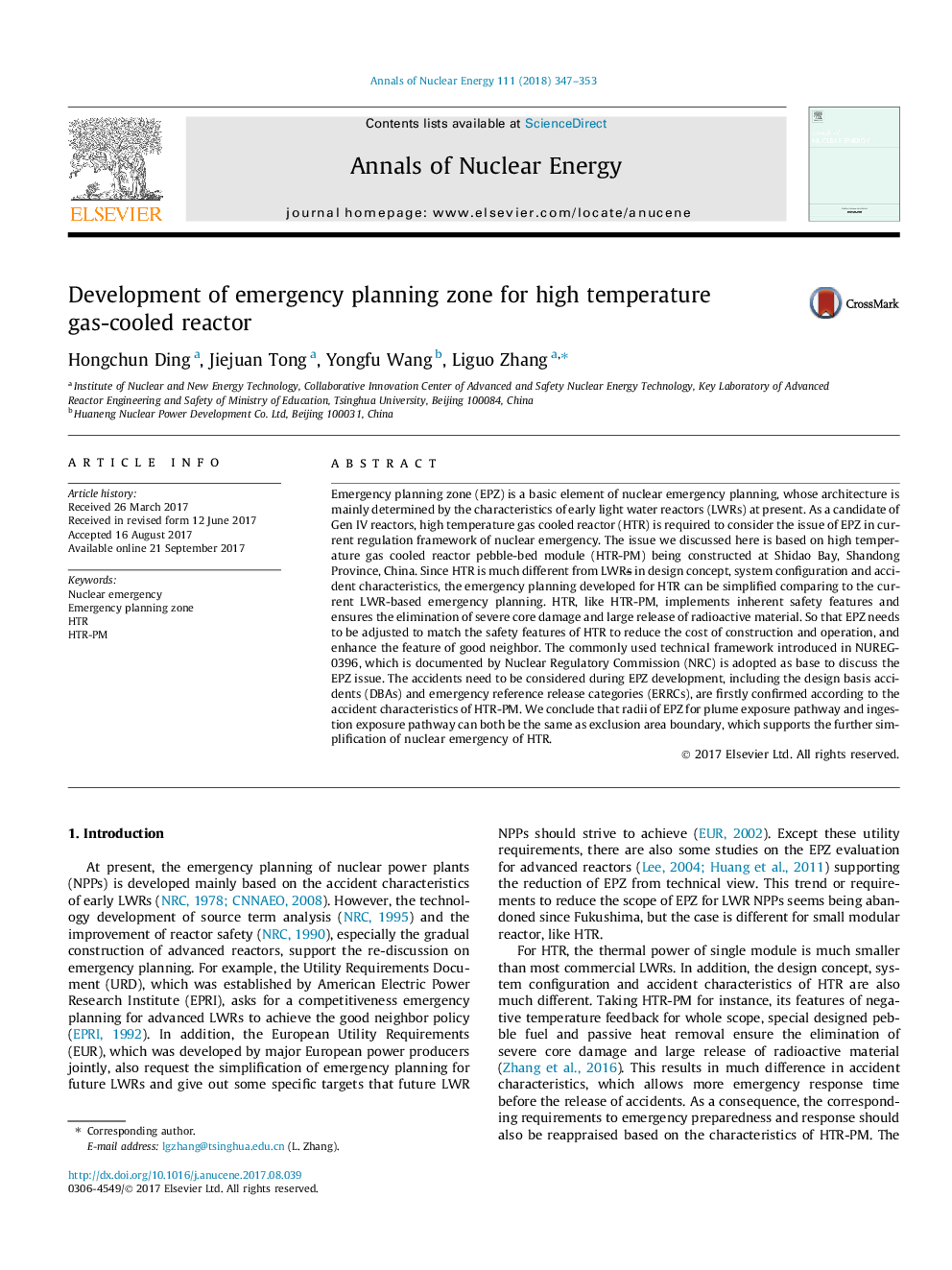| Article ID | Journal | Published Year | Pages | File Type |
|---|---|---|---|---|
| 5474809 | Annals of Nuclear Energy | 2018 | 7 Pages |
â¢The principle, method and result of EPZ development for HTR-PM is discussed.â¢EPZ size of HTR-PM can be several hundred meters as exclusion area boundary.â¢Smaller EPZ makes space for discussing emergency related issues for HTR-PM.
Emergency planning zone (EPZ) is a basic element of nuclear emergency planning, whose architecture is mainly determined by the characteristics of early light water reactors (LWRs) at present. As a candidate of Gen IV reactors, high temperature gas cooled reactor (HTR) is required to consider the issue of EPZ in current regulation framework of nuclear emergency. The issue we discussed here is based on high temperature gas cooled reactor pebble-bed module (HTR-PM) being constructed at Shidao Bay, Shandong Province, China. Since HTR is much different from LWRs in design concept, system configuration and accident characteristics, the emergency planning developed for HTR can be simplified comparing to the current LWR-based emergency planning. HTR, like HTR-PM, implements inherent safety features and ensures the elimination of severe core damage and large release of radioactive material. So that EPZ needs to be adjusted to match the safety features of HTR to reduce the cost of construction and operation, and enhance the feature of good neighbor. The commonly used technical framework introduced in NUREG-0396, which is documented by Nuclear Regulatory Commission (NRC) is adopted as base to discuss the EPZ issue. The accidents need to be considered during EPZ development, including the design basis accidents (DBAs) and emergency reference release categories (ERRCs), are firstly confirmed according to the accident characteristics of HTR-PM. We conclude that radii of EPZ for plume exposure pathway and ingestion exposure pathway can both be the same as exclusion area boundary, which supports the further simplification of nuclear emergency of HTR.
